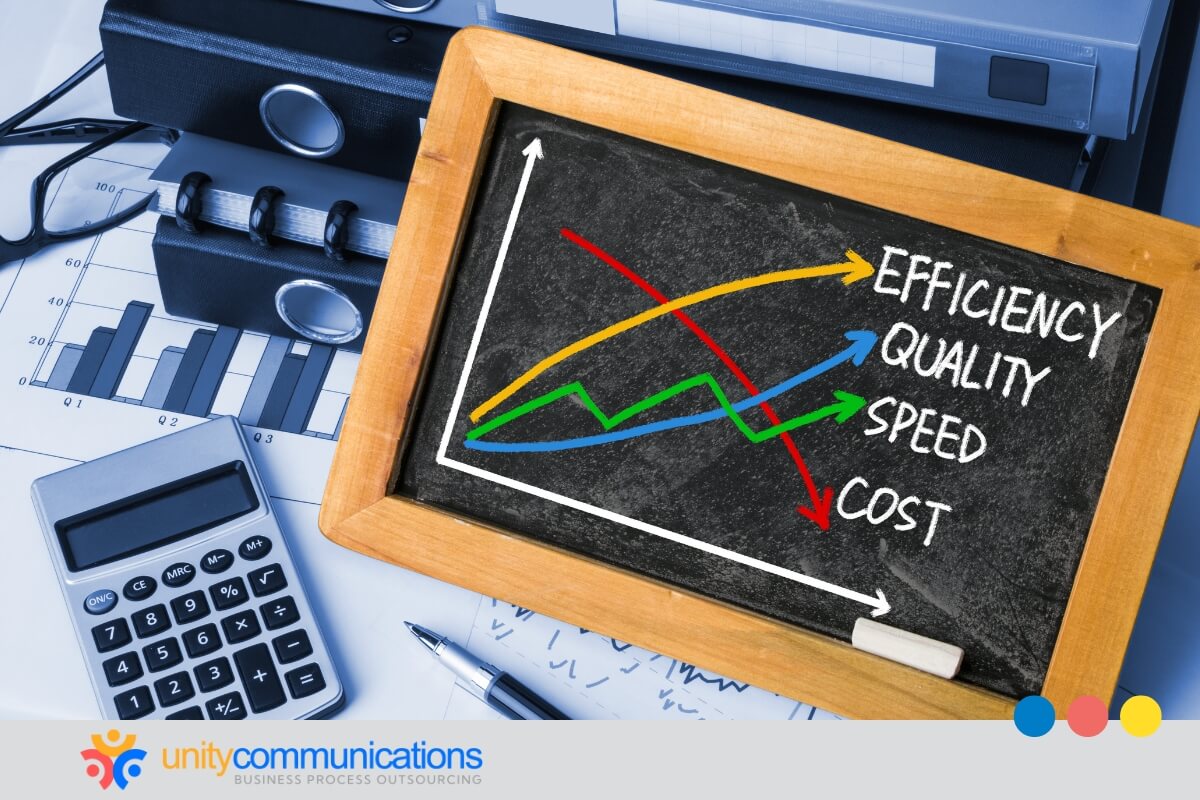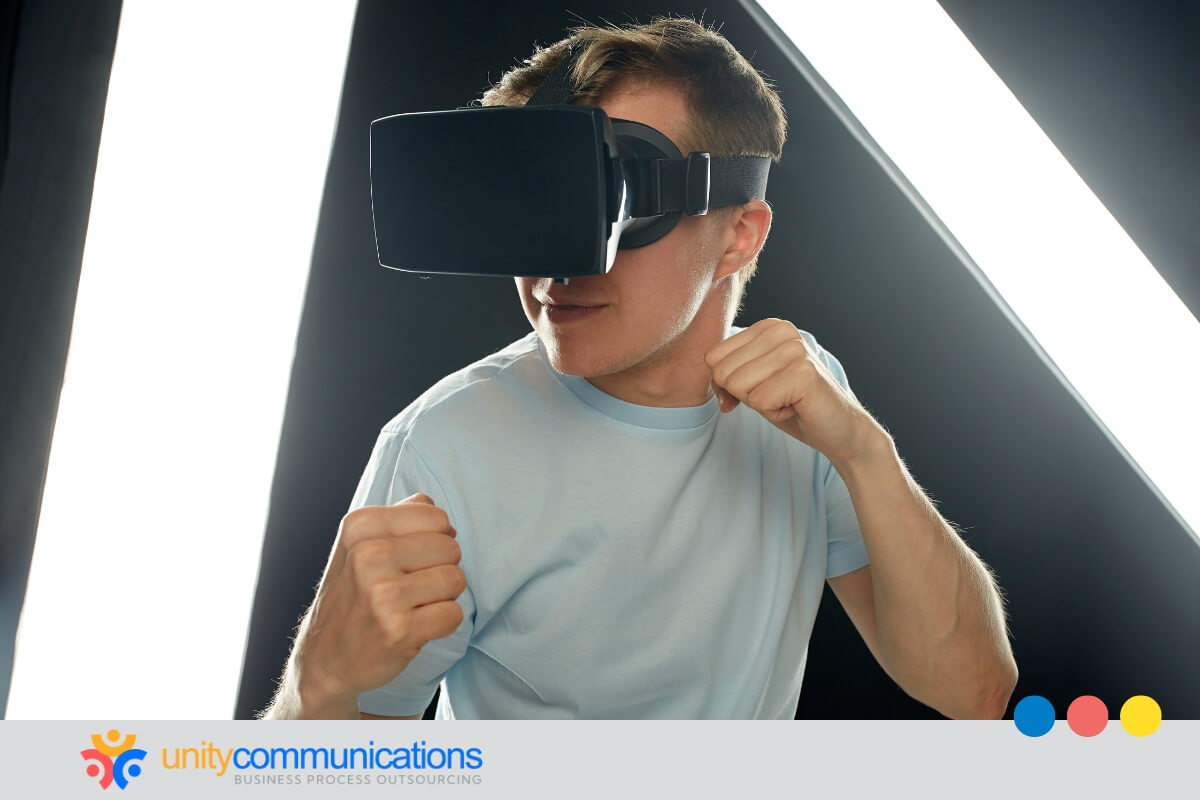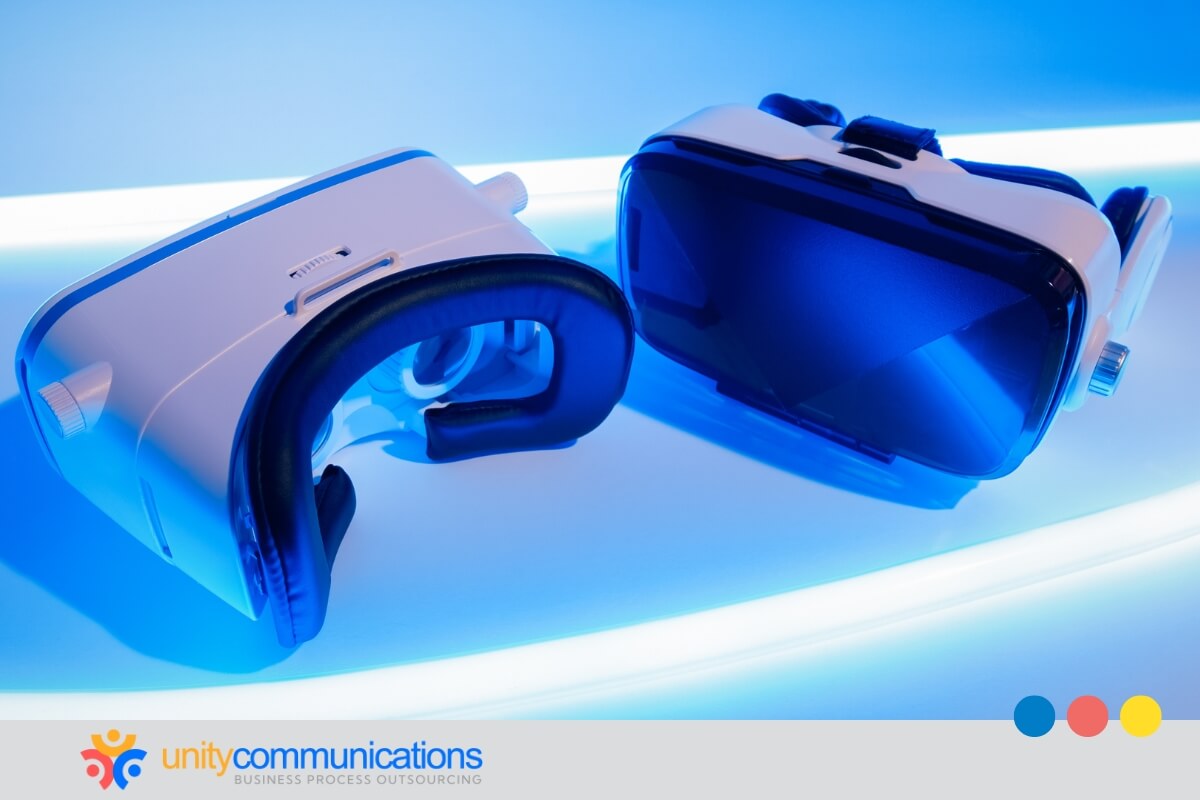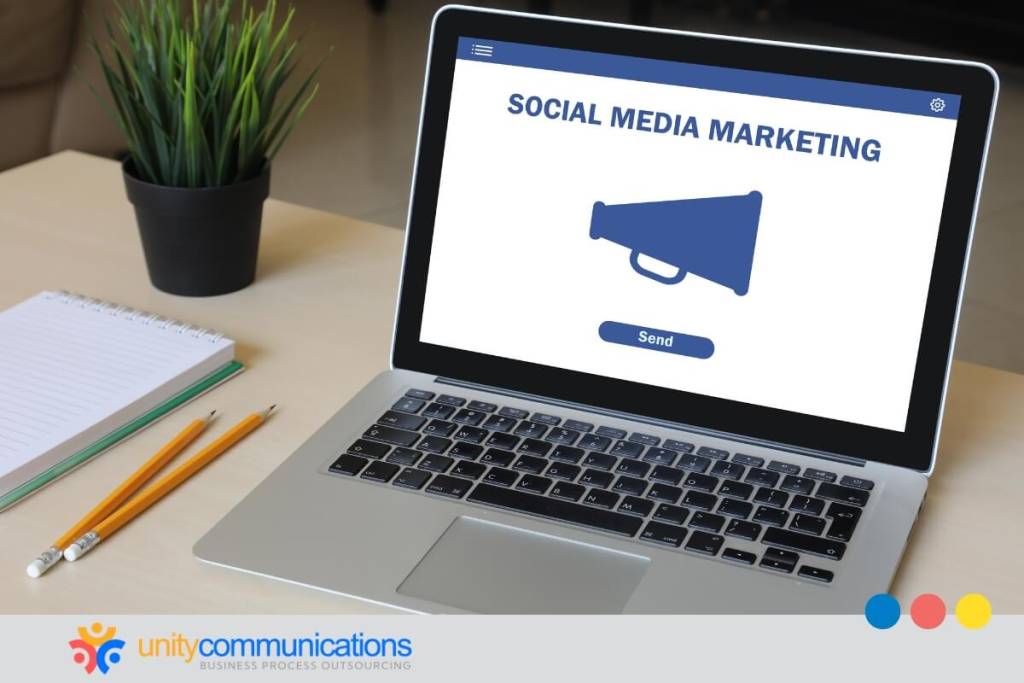Table of Contents
Companies innovate to react to an ever-evolving business climate. Implementing virtual reality (VR) and augmented reality (AR) in various industries has revolutionized how consumers and businesses approach tasks, from shopping for goods to performing medical procedures.
VR and AR technology can be the solution to acquire and retain customers and edge out the competition. Thus, companies across all industries partner with business process outsourcing (BPO) firms for access to experts specializing in VR and AR.
This article discusses the role of BPO in AR and VR development, the benefits and challenges of outsourcing this function, and the strategies for success.
The Benefits of BPO in AR and VR Development

VR involves an artificial 3D environment or model that immerses users in the digital world using a special headset. Conversely, AR laminates virtual information onto the physical world. AR technologies allow users to interact with the real world instead of a simulated scenario and experience an enhanced view.
The global AR and VR market will reach $77.5 billion by 2028, up from $32.5 billion in 2023. Furthermore, it will show a compound annual growth rate (CAGR) of 19.0% during the forecast period. As more industries adopt the technology to enhance customer satisfaction, businesses will outsource relevant projects to BPO companies.
But what is BPO in AR and VR development, and why must businesses consider this solution? We discuss the main reasons below.
Improved Reliability and Expertise
AR and VR development requires industry expertise. Developers must know how to create immersive experiences that focus on the subject matter and do not allow technology to be a distraction.
Third-party development teams can prevent cognitive overload and summarize the important takeaways. These professionals deal with both sides of AR and VR—knowledge transfer and tech. A trusted BPO firm employs AR and VR developers skilled in:
- Programming. AR and VR developers use languages such as C#, Swift, Python, and Java.
- UX design. Excellent user experience (UX) design incorporates the ideas of developers, clients, and team members.
- Animation. AR and VR developers are proficient with 3D animation software such as Unreal Engine and Unity.
- Creativity. Since AR and VR blur the line between arts and tech, developers must possess creativity and design skills.
As an outsourcing client, you must choose a vendor that specializes in your niche, understands your employees’ pain points, and presents ways to improve workplace performance.
Greater Efficiency and Speed
AR and VR initiatives take a long time to develop and market. Let us take two projects from major companies as examples. In 2022, Google revealed an AR headset called Project Iris, yet recent reports state that Google pulled the plug on the project. Similarly, Apple has delayed its Vision Pro release to 2024 after production challenges.
Both of these instances illustrate the reality of AR and VR projects—they are often too expensive and complex to make on time.
Expanding your team by hiring third-party developers can help you complete your project faster. An outsourcing provider supplies you with the necessary resources and accurately follows a timeline to suit your targets.
Affordable Pricing
VR and AR projects are expensive, and their costs can often be too limiting. Even industry giants are not immune to massive losses. For example, Meta’s Reality Labs reported a $13.7 billion loss in VR and AR in 2022. Since the BPO provider supplies the needed workforce and resources, it can minimize your initial investment in this industry and mitigate potential losses.
Here are some factors that affect the cost of AR and VR development:
- Project complexity. The technical sophistication and intricacy needed to develop and deploy AR and VR solutions affect the final price. More complicated projects require more advanced hardware, software, and specialized skills.
- Types of technology. Technology may involve marker-based AR and markerless AR. The former is more affordable since it utilizes markers such as quick response (QR) codes to trigger digital content. The latter relies on computer vision algorithms to detect objects, making it more expensive.
- Hardware choice. High-end hardware is more expensive, and compatibility with existing hardware is also a factor businesses must consider.
- AR development approach. AR and VR development approaches include open-source and proprietary software. Open-source is cheaper but may have limited customization options and lack certain functionalities. Proprietary software comes with advanced features but often requires an upfront investment.
- Content requirements. AR and VR content refers to digital data and assets needed to create the experience. Content components include 3D animations and models, interactive elements, user customization, and ongoing updates.
- Maintenance and updates. AR and VR technologies evolve, and frequent updates are crucial to ensure smooth functioning. Maintenance and updates require time, manpower, and technical expertise.
BPO cuts costs in AR and VR development initiatives. One of the top advantages is that providers have a well-stocked toolbox. Instead of building an in-house team of software developers or preparing for compatibility issues, you just need tools for content upkeep.
Overcoming Challenges in Outsourcing AR and VR Development

BPO and digital transformation go hand in hand. Outsourcing helps companies work smarter. Clients can access a team of skilled AR and VR developers and innovative solutions for a fraction of the price of in-house development.
However, it comes with some challenges, such as:
- Data privacy problems. Sharing confidential information with a third party raises concerns about the safety of intellectual property and data security. Hence, you must draft an airtight agreement and have your legal team review it.
- Communication issues. Successful BPO partnerships need clear communication. Language barriers and time zone differences may hinder the smooth flow of ideas. Ensure frequent and clear communication to convey project nuances.
- Project misalignment. Sharing project nuances with an external team can be challenging, potentially resulting in deviations from the original objectives. Maintain fidelity with project goals by improving communication and utilizing project management tools such as Jira to track each step.
- BPO partner mismatch. Choosing the right outsourcing provider is important. Assess your potential partner’s portfolio, technical expertise, and past collaborations for a seamless relationship. Ask about their communication practices and compliance with data security policies.
Key Considerations When Outsourcing AR and VR Development
Before you start outsourcing, consider the following crucial factors:
- Business fit. Whether you want to reach global or local audiences, pick a provider specializing in your chosen technology. Doing so matches you with vendors who can meet your requirements through extensive experience in your current system.
- Transparency and communication. Whatever model you choose, you must seek transparency and proper communication from your service provider. Ask for progress reports to maintain control over your project.
- Customer and client relations. You should not ignore the vendor’s customer service, no matter how superior or rich their technology stack and expertise. Your partnership might suffer delays and dissatisfaction if the outsourcing provider is not focused on customer experience.
- AR and VR development costs. Development providers use either a fixed price or a time and material pricing structure. Depending on the complexity and scope of your project, developers will estimate the amount of work and calculate the total costs using agreed-upon rates.
The Bottom Line

AR and VR technologies offer superior, immersive user experiences. They enable companies to train employees without spending resources and allow customers to test a product without buying it.
Getting the right BPO partner for your AR and VR projects is the key to success. The right partner can deliver efficient, affordable development solutions with excellent results, arming your company with a competitive edge.
Unity Communication’s expertise is finding reliable talent for your outsourcing needs. Let’s connect to find out more about outsourcing.



